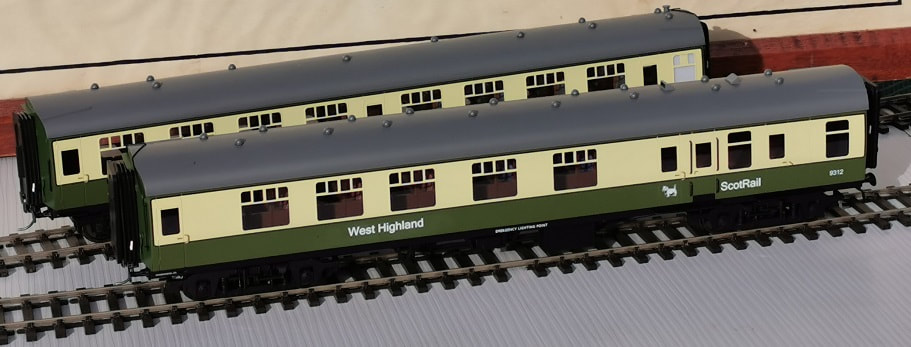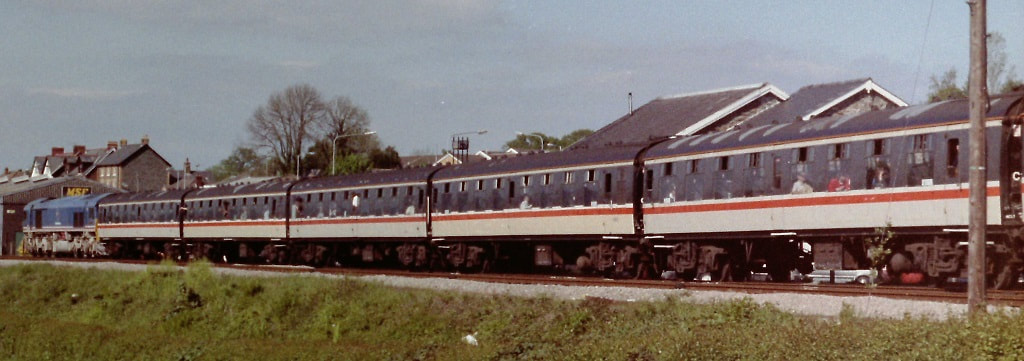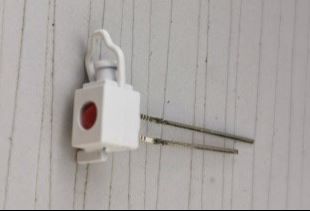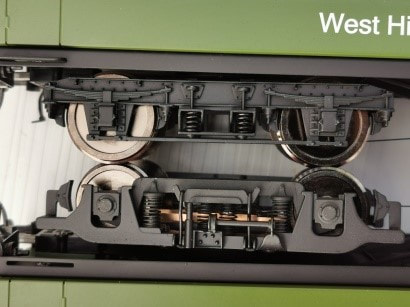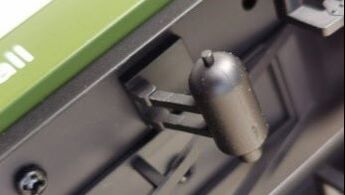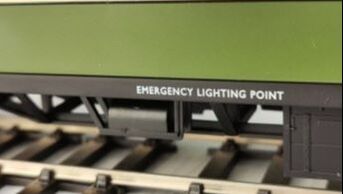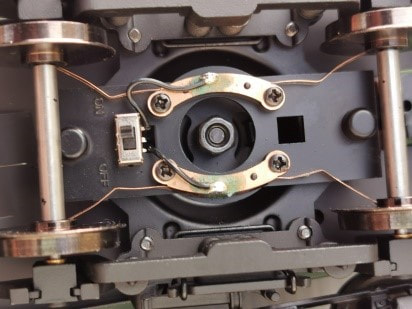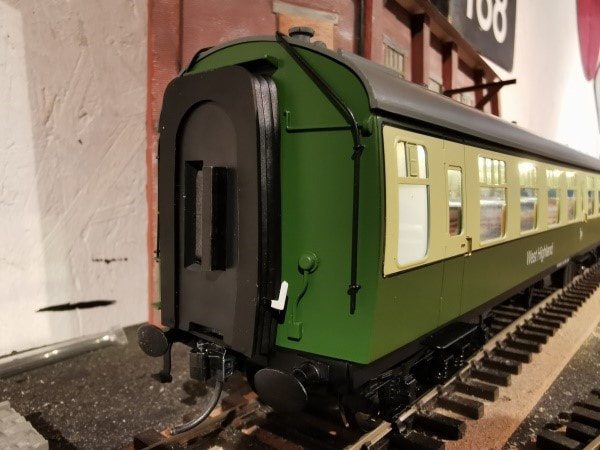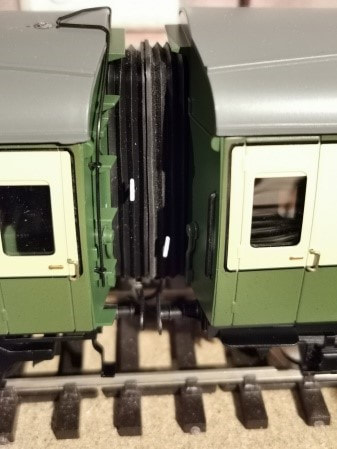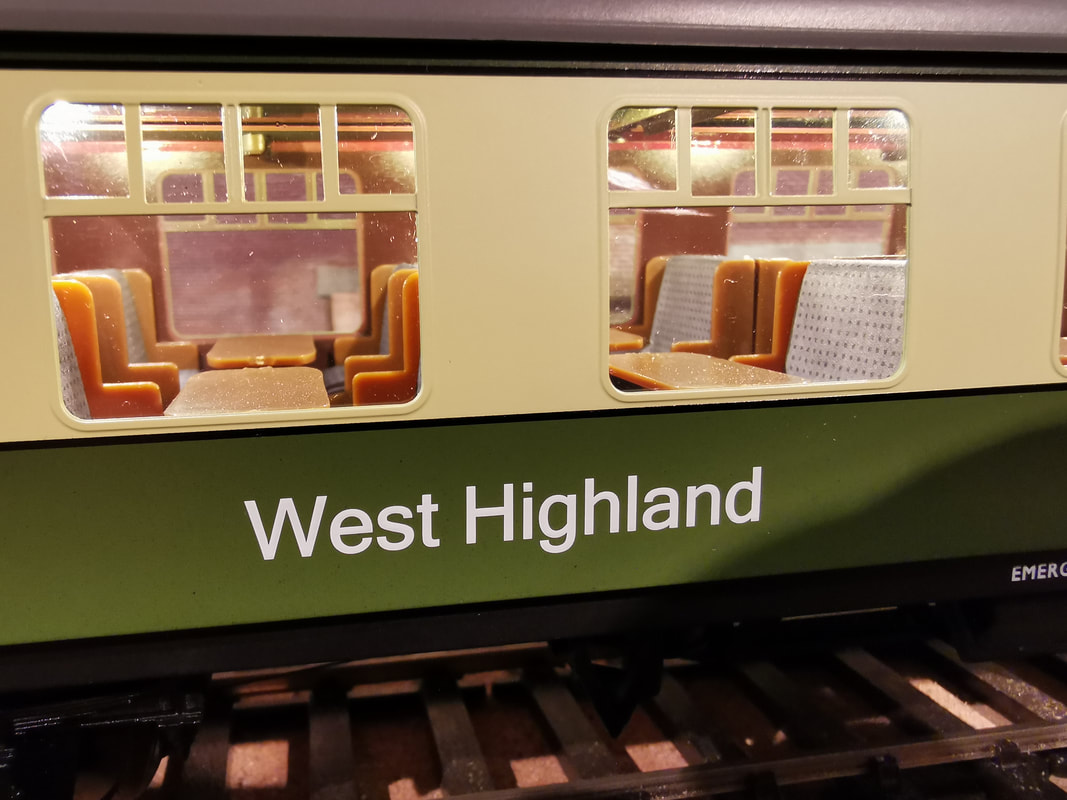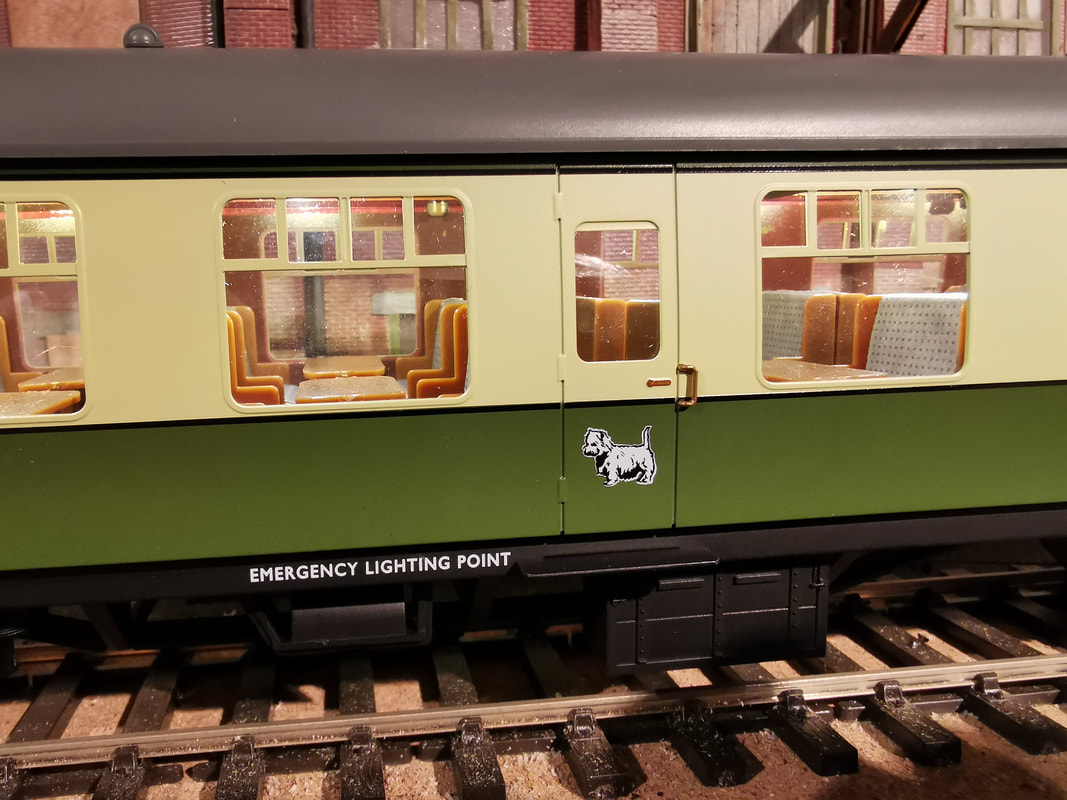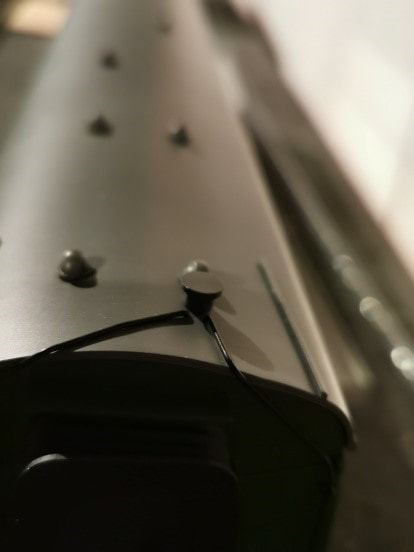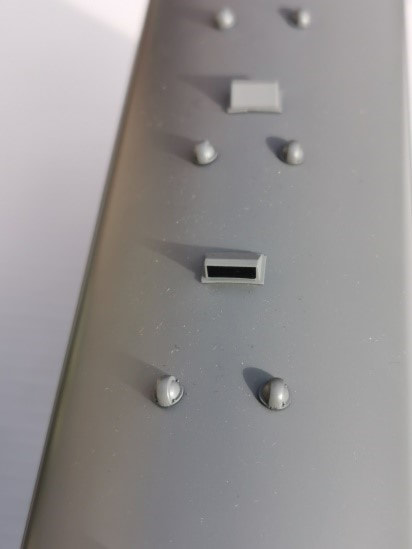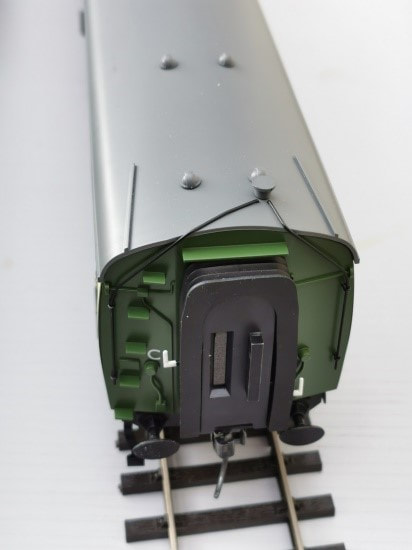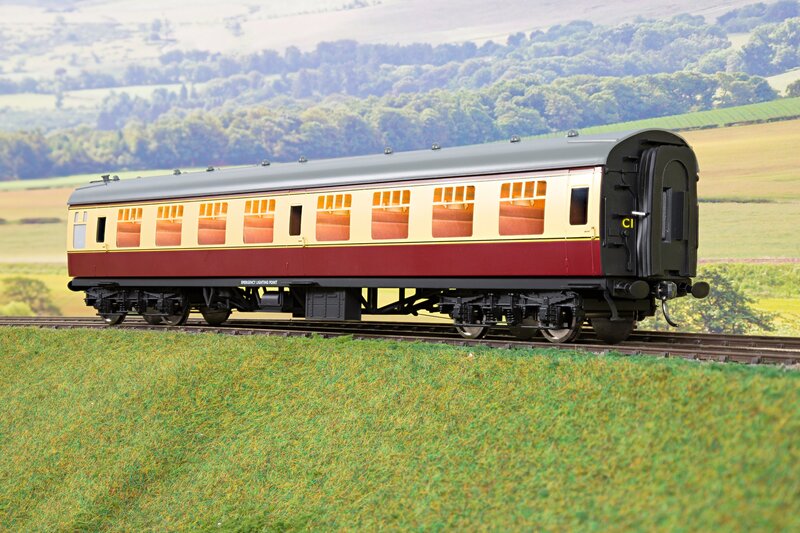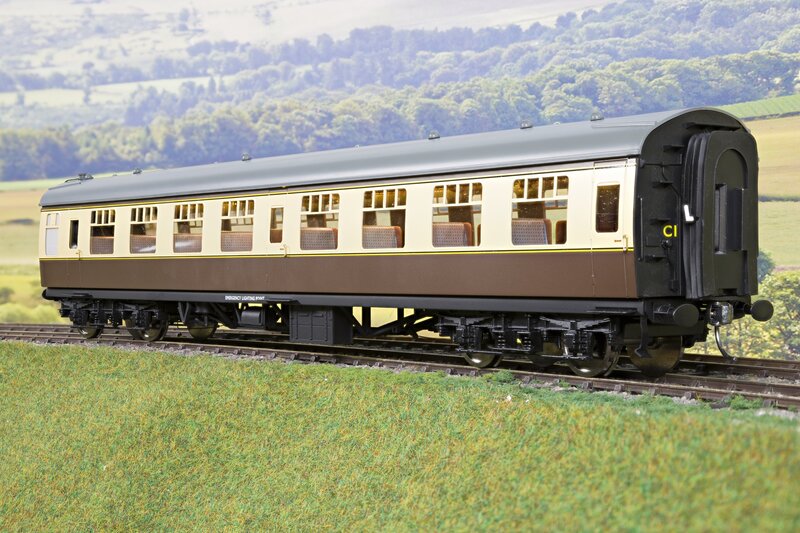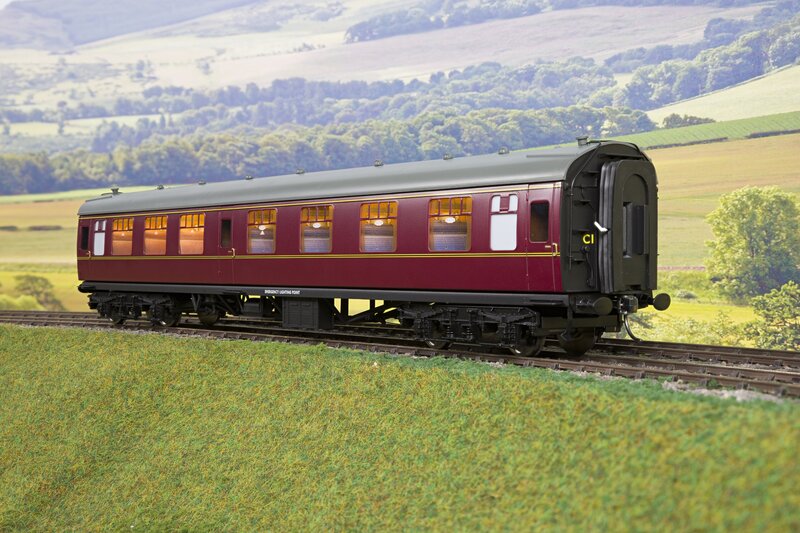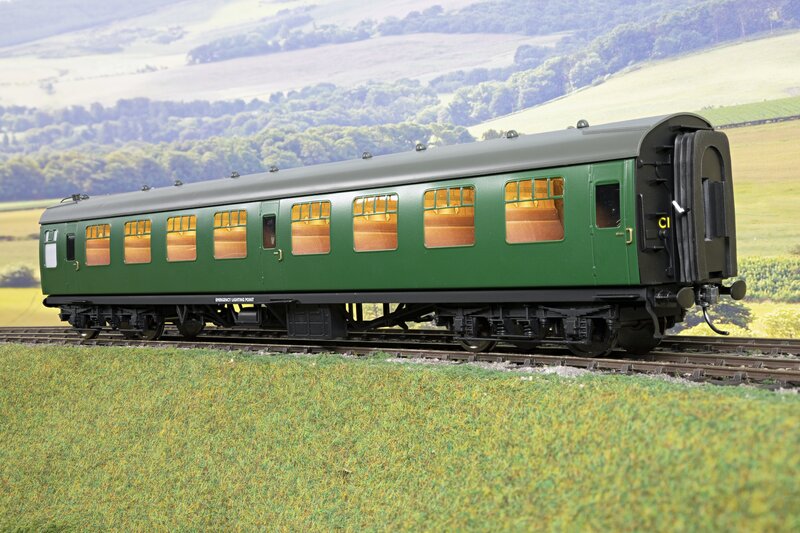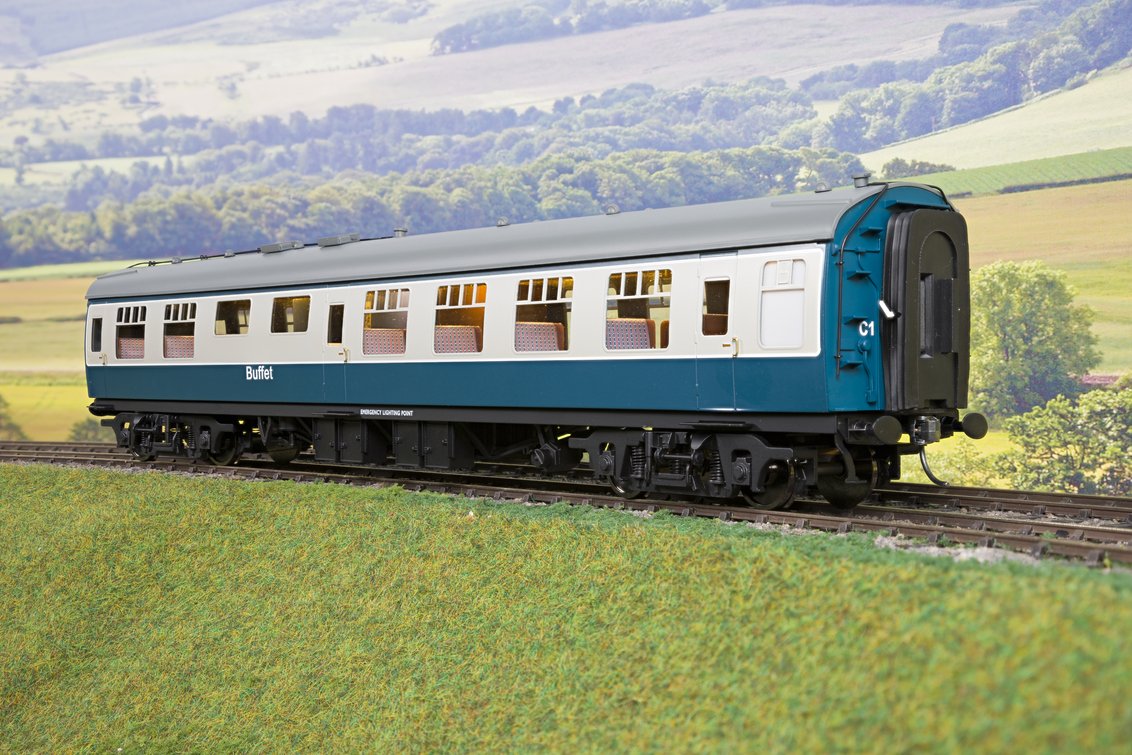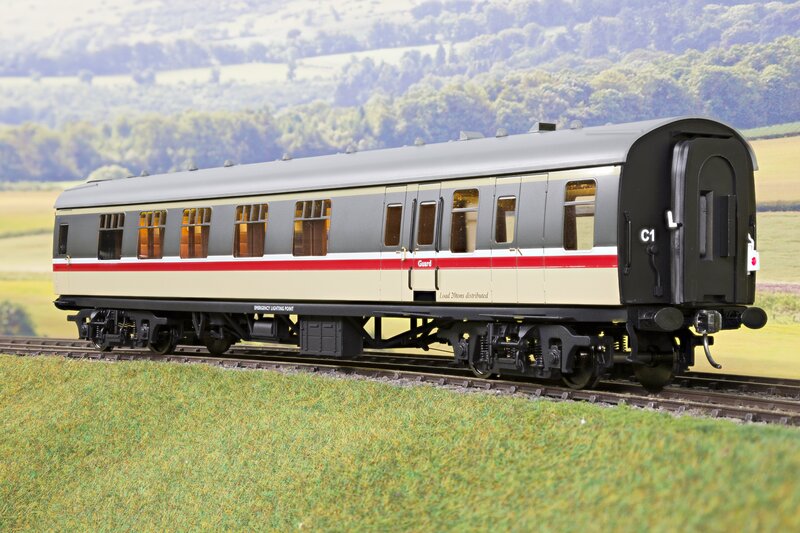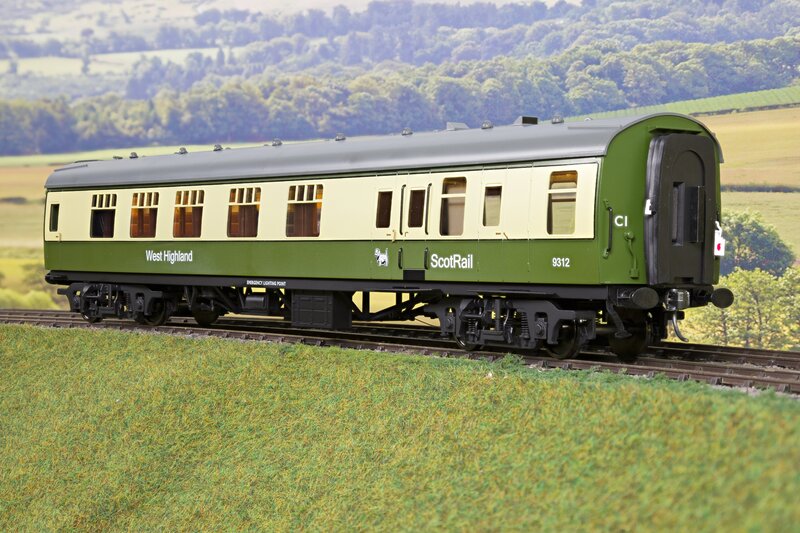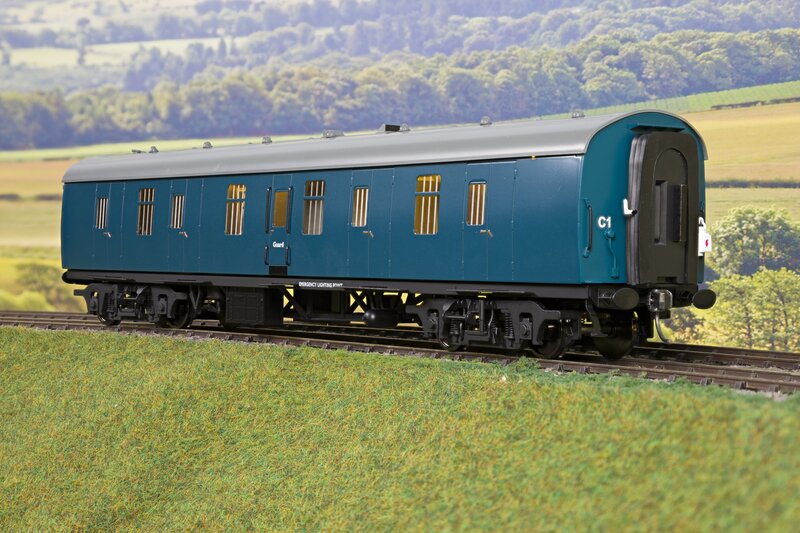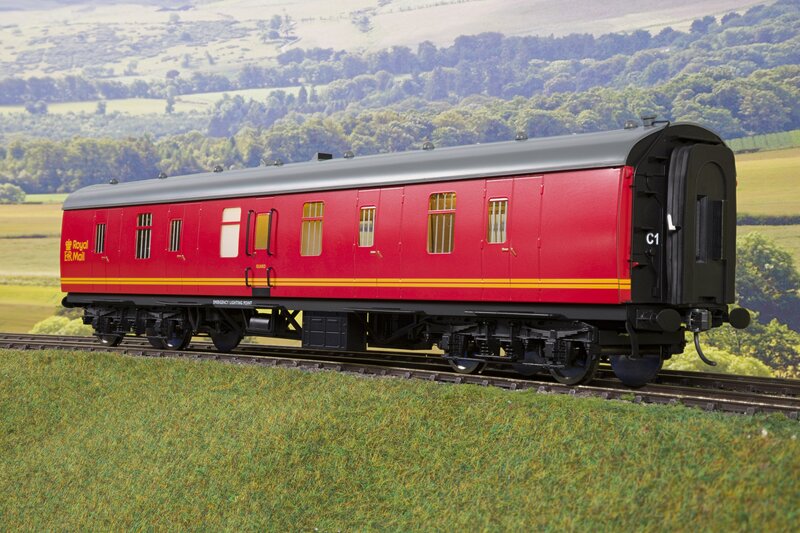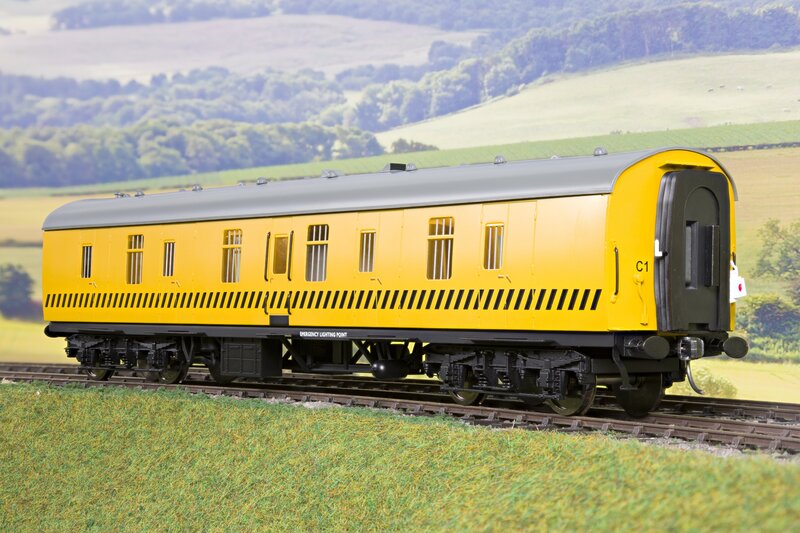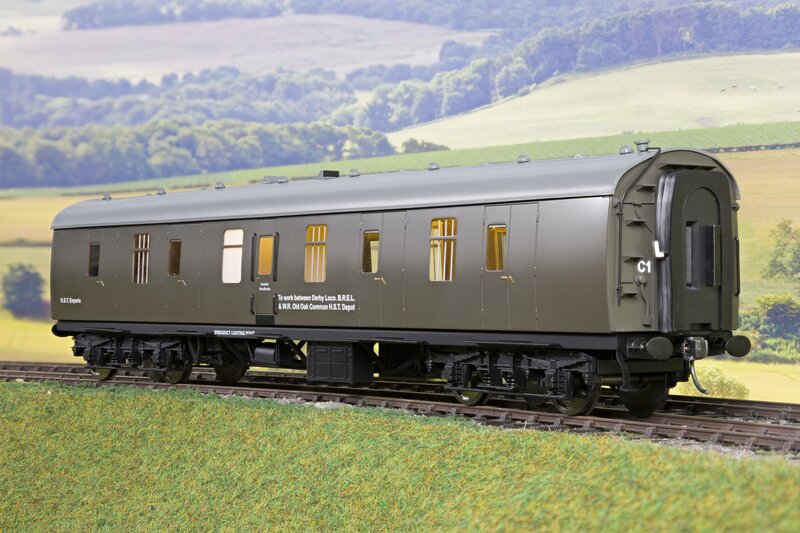Darstaed BR Mark 1 Coaches
Thanks to Ellis Clark for sending the samples for review. I have received a Brake Corridor Composite (BCK) and a Tourist Second Open (TSO) both in the Scotrail Tourist West Highland Line Green and Cream livery. Both models are on the longer 63ft 5in underframe. There are atotal of 12 different types of vehicle on the 63ft underframe and the shorter 57ft BG options across the Darstaed range of MK1's in a variety of liveries.
A Brief History
The BR MK1 is one of the longest serving BR vehicle designs still running on the mainline, as well there being numerous in preservation in a variety of guises. Designed and built after Nationalisation in 1948, it incorporated all of the best features of the Big Four companies and many private company developments. The MK1 coach desing was in continuous production between 1951 and 1974 and formed the backbone of the network services for many years. It was designed as a separate underframe to which the body work was secured which allowed for a great deal of flexibility and lead to a variety of body types. It was also the standard underframe to be used for loco hauled, multiple unit and Non Passenger Carrying vehicles. Vehicles were built by a number of external contractors to a number of diagrams, with Metro-Cammell contracted to build a number of Pullman Vehicles in 1960. Later Build MK1’s were fitted from the outset with Commonwealth Bogies as opposed to the BR1 bogie, many vehicles were subsequently fitted with B4 and B5 bogies later life. With concerns over the crash worthiness of the MK1 design following a number of high profile accidents and development of later vehicle types along with restrictions on how the vehicles can be used, the large majority of MK1 vehicles are no longer in front line use. In fact the only MK1 derivative vehicles that remain on the main line are the Charter rakes of LSL, Riviera, SRPS and WCRC. Though a huge number of vehicles have met their end in scrap yards, many also survive either in use or awaiting restoration at Preserved Railways around the country enabling memories to be stirred while enjoying haulage by preserved steam and diesel loco's alike.
59204 at Llandrindod Wells with a charter rake of Intercity MK1's. 26/05/97 06.38 Sheffield - Llandrindod. Photograph courtesy of Alistair Tait.
What’s in the Box
|
Besides the coach there are a number of packets within the comprehensive packaging: There is a instruction booklet and transfer set and a corridor connection end plate. This fits neatly to the corridor connection to give a realistic End panel. The TSO also had an additional non-working tail lamp provided
|
The Models
Based on the 63ft 5in MK1 chassis and fitted with compensated BR1 or Commonwealth type bogies, I particularly like the fact that the primary springs are actually coiled springs rather than moulded plastic. One bogie contains the electrical pickups for the internal lighting and working tail light on the BCK model. There is also a small switch so that you can turn off this feature and the internal lighting.
|
I was able to remove the tail lamp by pulling it gently away from the body, this opens the door to changing the tail lamp to a later modern flashing design, or even a flickering LED. I reviewed the Surburbans and wish that they had the same feature as the Tail Lamp does seem a little oversized.
Whilst looking at the lower part of the model, there is a well detailed underframe including brake rodding, battery boxes and the lighting circuit control box. I can’t help thinking the dynamo looks a bit crude due to its robust moulded bracket. As a modeller I would consider bending a piece of brass/plasticard strip to create a belt that reaches into the bogie frame and also some wires from the dynamo to add some more detail. The Dynamo is a separate addition that had come loose on one of the models and lead to thinking it could be easily replaced with an alternative design. |
Above the frames is where we tend to pay attention more as this is where the eye naturally falls to model first. The model captures the prototype very well with the MK1 tumblehome curvature profile and well detailed grab handles and door latches. Etched into the brass are lines to represent the door openings and slightly raised sections along the captive edge to represent the hinges. Unlike the Mk1 Surburban I couldn’t find any additional hinges in the box. I’m not sure whether this is an oversight on the models I received, or whether they are included or not with other models in the range. Like the MK1 Suburbans, I believe adding these would enhance the model.
|
This brings us on nicely to the interiors. These are lit by bright white lights when running on my DCC test track which runs at 18v AC, but put 9v across them and they are more pleasing and realistic tungsten tone. However, for the modern image modeller they would be a fairly accurate representation of the harsher florescent fittings found in refurbished stock. The lighting is fabulous for showing off the detailed interiors, as with the Mk1 Surburbans I must commend the manufacturer on the effort that has gone into the them, they really do stir memories of the compartments and interiors on the real things. I can’t help thinking however, that the TSO seats look a little too much like the plastic they are made from and seem a little too light in colour. The interior lights on the higher voltage DCC could do with being toned down to represent the old tungsten lighting that these were originally fitted, this can be done by adding some yellow paint to the LED's or adding a resistor in the system if you have the roof off. The instruction manual tells you how to remove the roof so that you can add passengers for that added extra amount of realism. I would suggest that you read this prior to removing the roof.
|
The manufacturer has made a good job of the ends of the coaches, however, the some details that were removed from virtually all of the MK1’s with the advent of electrification are cast into the ends making them difficult to remove. The footsteps to roof, whilst accurate for the early build coaches, are something that needs to be removed for the majority of stock if modelling anything from the early 1960’s. I think rather than cast the ends with these steps it may have been better to cast the ends without all but the bottom one, and offer additional steps available to purchase should it be so wished. One end of the BSK has the steps correctly omitted. I must mention the handrails which I think are great, and are better than the ones I have on my kit built M1’s.
The roof has a smooth finish to represent the galvanised sheets of metal used in the roof construction. The roof is coloured light grey, as per original specification. The BCK is also fitted with Guards Periscope openings on the roof which again while fitted to the early production models were steadily removed as they passed through works, as they were no longer required or used. They were also prone to leaking!! I wonder as with the end steps if it would be better to make the production model without periscopes and have these as an optional extra to be fitted if required. The moulded air vents are correctly patterned to one of the many types used, and if you remove the roof ensure that you put on them back on correctly as the vents will need to line up correctly with the toilets due to the roof mounted water tank fillers.
The colour scheme is applied neatly with good clear lettering applied where appropriate, sadly there are no overhead warning flashes applied to the models I reviewed, which would have been a given marking, especially as Scotrail only came into being in September 1983 and such markings were mandatory from the early sixties. I couldn’t see any on the transfer sheet for models either. Is this a deal breaker, well no there are manufacturers of transfers that will sell you a sheet of flashes for a few pounds.
Conclusion
I’ve included this section as there a few limitations that things these vehicles. The Kadee couplings and the corridor connections give excellent close coupling, as long as you have a radius greater than 6ft. If you have curves that are more restrictive you will need to move the couplings out towards the end of the coach which then causes the corridor connections to sit apart. The models are supplied with Kadee couplers as standard and, if you are like me by not having other stock fitted with these you then have to exchange theses for a screw-link coupling, which are not supplied as standard. These are available separately from the distributors and if you require them it may be worth speaking to Ellis Clark to see if they will fit them at the time of supply.
The unsightly magnet and bar in the corridor connections means that you need to run the end coaches with a cover plate over the gangways. A practice that was much declined from the mid 70’s, or marshal the Darstaed vehicles in a rake of carriages with outer vehicles fitted with traditional screw couplings. From the website images it appears that this type of coupling is also applied to the BG, and as the BG’s were often seen as stand alone vehicles I do wonder whether it would have been best to fit shackles rather than Kadees?
In conclusion the Dartsaed models would be an excellent addition to any railway based post 1951, providing you don’t have curves that are too tight. There are few minor issues already mentioned about the steps, hinges and roof, but these would not be insurmountable issues, and unless you know your prototypes well most people would probably completely unaware of these issues.
As supplied the Mark 1 is perfect for pre electrification layouts where the steps and in most circumstances the periscopes and steps started to be removed from 1960. There were however a number vehicles in preservation that have retained these features. The end steps and periscope issues is not unique to the Darstaed models, and there are examples of the steps and periscopes on other manufactures models.
One of the models I received was a set of under door steps missing and the water fill vent was knocked off in the bottom of the box. Despite these issues the box still had a quality control sticker would question the level of quality control at the factory.
On a personal note I think these are excellent well-built, highly detailed models and the interiors are first class. Yes there are some niggles, but these don’t detract from the quality of the overall vehicles. There’s a variety of bogie types and with the modified bogies the once criticism of the pre-production models riding heights seems to have been rectified. It will be interesting to compare them side by side with other manufacturers models as they arrive onto the market, but as the Heljan one is already in general release I can say that the BG certainly has the same coach end and periscope issues as the Darstead model.
The unsightly magnet and bar in the corridor connections means that you need to run the end coaches with a cover plate over the gangways. A practice that was much declined from the mid 70’s, or marshal the Darstaed vehicles in a rake of carriages with outer vehicles fitted with traditional screw couplings. From the website images it appears that this type of coupling is also applied to the BG, and as the BG’s were often seen as stand alone vehicles I do wonder whether it would have been best to fit shackles rather than Kadees?
In conclusion the Dartsaed models would be an excellent addition to any railway based post 1951, providing you don’t have curves that are too tight. There are few minor issues already mentioned about the steps, hinges and roof, but these would not be insurmountable issues, and unless you know your prototypes well most people would probably completely unaware of these issues.
As supplied the Mark 1 is perfect for pre electrification layouts where the steps and in most circumstances the periscopes and steps started to be removed from 1960. There were however a number vehicles in preservation that have retained these features. The end steps and periscope issues is not unique to the Darstaed models, and there are examples of the steps and periscopes on other manufactures models.
One of the models I received was a set of under door steps missing and the water fill vent was knocked off in the bottom of the box. Despite these issues the box still had a quality control sticker would question the level of quality control at the factory.
On a personal note I think these are excellent well-built, highly detailed models and the interiors are first class. Yes there are some niggles, but these don’t detract from the quality of the overall vehicles. There’s a variety of bogie types and with the modified bogies the once criticism of the pre-production models riding heights seems to have been rectified. It will be interesting to compare them side by side with other manufacturers models as they arrive onto the market, but as the Heljan one is already in general release I can say that the BG certainly has the same coach end and periscope issues as the Darstead model.
Available Range
|
Darstaed's BR MK1 comes in a variety of body styles including FK, CK, SK, BSK, RU, RMB, RFO, RSO, TSO, BSO, BCK & Sleepers. They are available in Crimson and Cream (Blood and Custard), Maroon, Blue and Grey, BR Southern Green, BR Chocloate and Cream, Intercity, and the both early & later versions of Scotrail's West Highland Green and Cream. These models fill a ready to run gap that both other manufacturers are working hard to fill, and being sold at £189.00 each, they certainly offer reasonably good value for money.
I’ve not had an opportunity to review the 57ft BG but this also comes in a plethora of liveries: Intercity, Engineers Olive Green, Departmental Yellow, Blue and Grey, Blue, Crimson and Cream, Chocolate and Cream, Southern Green, Maroon, Post Office Red, and Royal Mail Red. These are priced at £169 per vehicle. |
Proudly powered by Weebly
